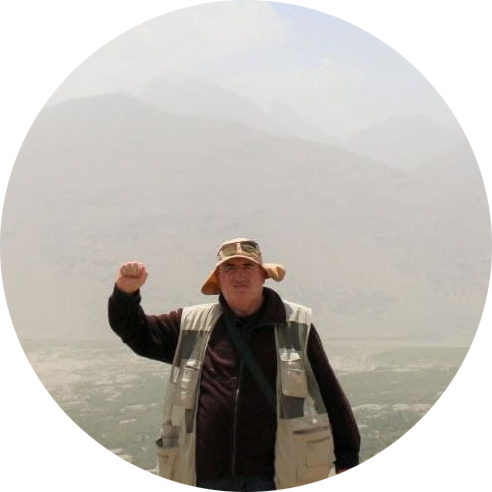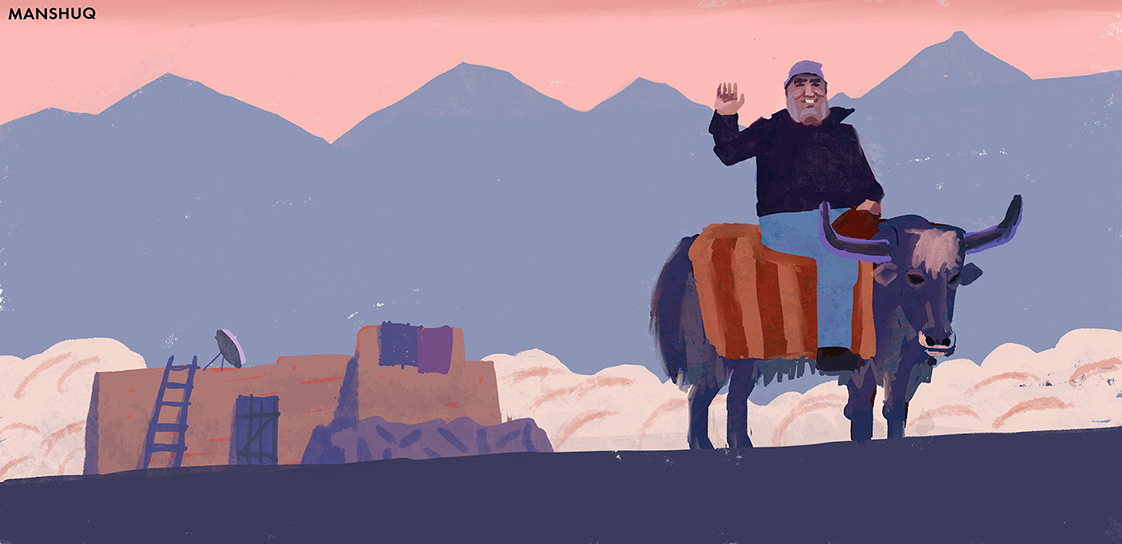
Getting to Know Tajikistan, or Traveling on the “Roof of the World”

Kurbonidin Alamshoev:
Cultural Treasures
For example, it is worth taking a trip to a kind of special local house – the chid (or chud). A quite ordinary one-story building made of clay, stone, and wood (poplar or apricot), with a flat roof. But it is more than just a house, it is a temple filled with spiritual traditions and mysteries. The interior decorations of Pamiri homes have their own symbolism. In these homes, nothing is accidental. The first thing you see as you enter the house is a large room with five pillars running from floor to ceiling. This refers to the mountain world where the prophets and saints that are mediators between God and men live. The pillars symbolize five Muslim saints and before Islam they were named after Zoroastrian deities. Chids help locals continue with their collective life skills, pass on the material and spiritual culture of their ancestors to new generations, and preserve their identity and the ancient Pamiri languages and customs. All rituals, from childbirth to funerals, take place in these traditional houses. The Pamiris lived in enclosed highland valleys, squeezed in between the Hindu Kush and Pamir ranges. This is what has helped them maintain their culture and way of life.
The Pamirs are also famous for their jurabs – these are long socks knitted from pure natural wool by local artisans. The patterns, colors (only natural dyes are used to color the wool) and symbols reflect the ancient history of the Pamiris.
Nature
Kurbonidin Alamshoev:
“The course under the UNESCO and EU partnership project Silk Roads Heritage Corridors in Afghanistan, Central Asia and Iran: International Dimension of the European Year of Cultural Heritage was very exciting and versatile. It included informative lectures and recommended literature and I learned a lot about the specifics of guide work. I also met interesting people from different countries. It was a fascinating experience. After the course I came up with the idea for a new project that will help people learn a lot about my home country.”
Must-See Places
The Pamiris say: “To be here and not see Murghob is like not seeing the Pamirs at all.” When we say the “roof of the world,” our first thought is Murghob in the Eastern Pamirs. A trip to Murghob is truly extreme, not only because of the severe climatic conditions (with average annual temperatures minus 5–7 Celsius), but also because of constant power outages, transport issues, poor quality of roads and communication, and the lack of fresh fruits and vegetables. But it is worth coming here despite all the difficulties. Murghob is home to many historical sites such as ancient caves with wall paintings. Many tourists come here every year to admire the rare Apollo butterflies. It is impossible to imagine Murghob without kutas, a wooly mountain cow. This animal is indispensable in the highlands―the Pamiris use it as a pack animal and weave carpets and palas rugs from its wool, the cows also give the fattest milk and meat that is unlike any other meat.
Tajikistan’s Cultural and Natural Sites on UNESCO World Heritage List
The Mountains of the Pamirs National Park covers over 2.5 million hectares in the east of Tajikistan, at the center of the so-called “Pamir Knot,” a meeting point of the highest mountain ranges on the Eurasian continent. The park has 170 rivers, more than 400 lakes, and at least 1,085 glaciers, including the longest mountain valley glacier outside the Polar region. This natural site is also home to rich flora species typical of the south-western and central Asian floristic region as well as nationally rare and threatened birds and mammals such as Marco Polo Argali sheep, snow leopards, and Siberian ibex. Subject to frequent strong earthquakes, the park is sparsely inhabited and offers a unique opportunity for the study of plate tectonics and subduction phenomena.
The content is the sole responsibility of the author and does not necessarily reflect the views of the European Union



